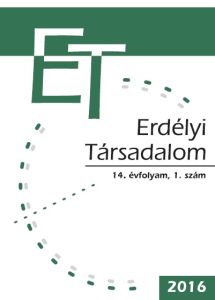Mélyszegénységben élő fiatal nők munkaerőpiaci és párválasztási perspektívái elzáródott vidéki térben
Labor Market Perspectives of Young Women Living in Extreme Poverty in Closed Rural Space
The Case of a Hungarian-Romanian Cul-De-Sac Border Village
Author(s): Ibolya Czibere, Éva MolnárSubject(s): Sociology, Rural and urban sociology
Published by: Presa Universitara Clujeana
Keywords: social exclusion;young women;spatial inequalities;spatial segregation;small villages;
Summary/Abstract: By the millennium, rural poverty has become persistent, strikingly increasing the unemployment rate for young people in villages and keeping it at this high level, while the reproduction of rural poverty has begun as well. It is quite a remarkable Hungarian phenomenon that poverty rather is concentrated in rural areas as compared to cities in Western Europe. The settlement comfort has fallen below the national average significantly, in terms of housing, institutions and commercial establishments as well. People with tangible resources have left these destitute small settlements, and as a result of selective migration, the ethnic and social composition of these settlements has become homogeneous as well. Due to the high level of residential segregation and poverty, people living in these disadvantaged small villages have access to different types of resources than the majority society has. The endowments of these disadvantaged settlements are detrimental to the local population, which, however, force different organizational options on men and women. This study presents young women’s chances of starting life, especially their relationship opportunities and labor market situation through the results of a comprehensive sociological research that has been carried out in a small cul-de-sac village of 350 inhabitants near the Hungarian-Romanian border. We have investigated this closed rural space where young people start life, make decisions on mating, child-bearing and labor market, while also examining the most influential factors and the way they perpetuate poverty and exclusion onto the next generations through certain mechanisms.
Journal: Erdélyi Társadalom
- Issue Year: 14/2016
- Issue No: 01
- Page Range: 165-190
- Page Count: 26
- Language: Hungarian

